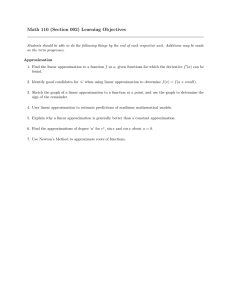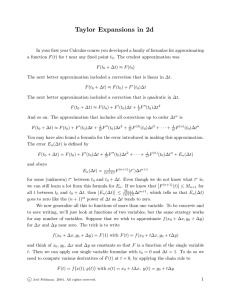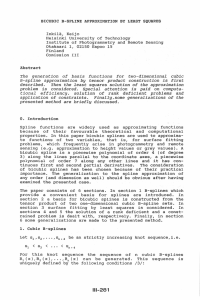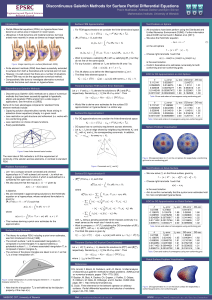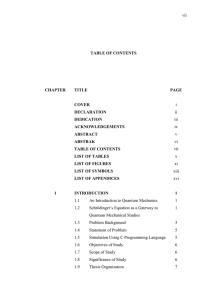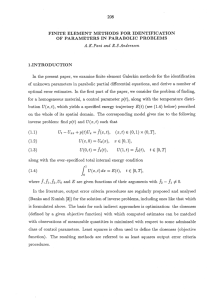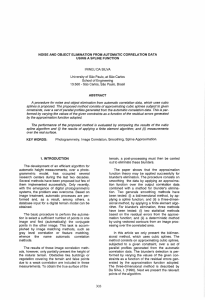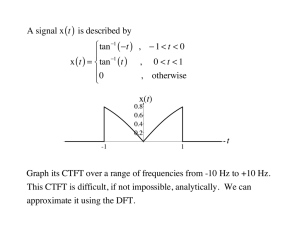Homework Exercises for Mathematics 6710 - Fall 2010
advertisement
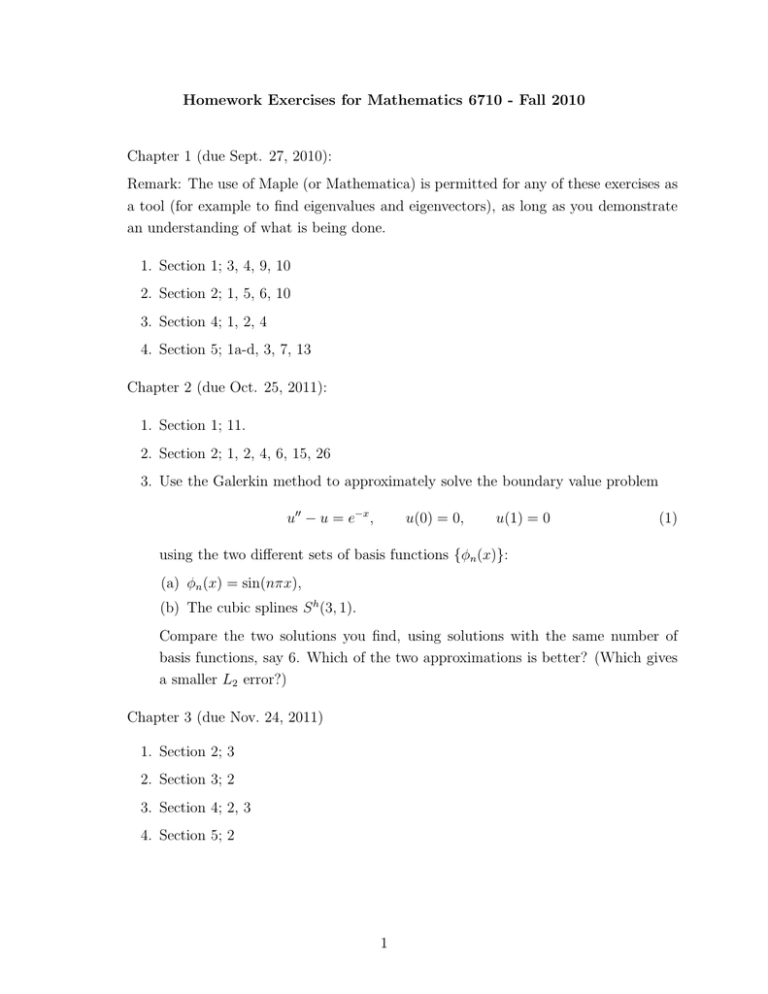
Homework Exercises for Mathematics 6710 - Fall 2010
Chapter 1 (due Sept. 27, 2010):
Remark: The use of Maple (or Mathematica) is permitted for any of these exercises as
a tool (for example to find eigenvalues and eigenvectors), as long as you demonstrate
an understanding of what is being done.
1. Section 1; 3, 4, 9, 10
2. Section 2; 1, 5, 6, 10
3. Section 4; 1, 2, 4
4. Section 5; 1a-d, 3, 7, 13
Chapter 2 (due Oct. 25, 2011):
1. Section 1; 11.
2. Section 2; 1, 2, 4, 6, 15, 26
3. Use the Galerkin method to approximately solve the boundary value problem
u′′ − u = e−x ,
u(0) = 0,
u(1) = 0
(1)
using the two different sets of basis functions {φn (x)}:
(a) φn (x) = sin(nπx),
(b) The cubic splines S h (3, 1).
Compare the two solutions you find, using solutions with the same number of
basis functions, say 6. Which of the two approximations is better? (Which gives
a smaller L2 error?)
Chapter 3 (due Nov. 24, 2011)
1. Section 2; 3
2. Section 3; 2
3. Section 4; 2, 3
4. Section 5; 2
1
5. One way to approximate the integral equation
u(x) +
Z
∞
k(x, ξ)u(ξ)dξ = f (x)
(2)
∞
is with the pointwise approximation
u(xj ) +
X
k(xj , xk )u(xk )dξ = f (xj )
(3)
k
where xj = (j − N)h, j = 0, 1, · · · , 2N.
(a) Show that this approximation can be derived using a projection built with
sinc functions.
(b) Under what conditions on k(x, ξ) does this approximation converge to the
solution of the integral equation, in the limit N → ∞, with h
fixed?
6. (a) What is the appropriate projection operator for the Galerkin method using
the cubic splines? That is, define P such that P : H → S h (3, 1), and P 2 = P .
(b) Find the cubic spline approximation for the solutions of problems Section 3.2;
3a,b. (What are the approximating equations? Solve these equations in the
simple case that h = 21 . How does the approximation solution compare with
the exact solution?
Chapter 4 (Due Dec. 16, 2011)
1. Section 1; 5, 7
2. Section 2; 2, 4, 10
3. Section 3; 3, 9, 11
4. Section 4; 2, 5, 8
5. Section 5; 5, 12
2




